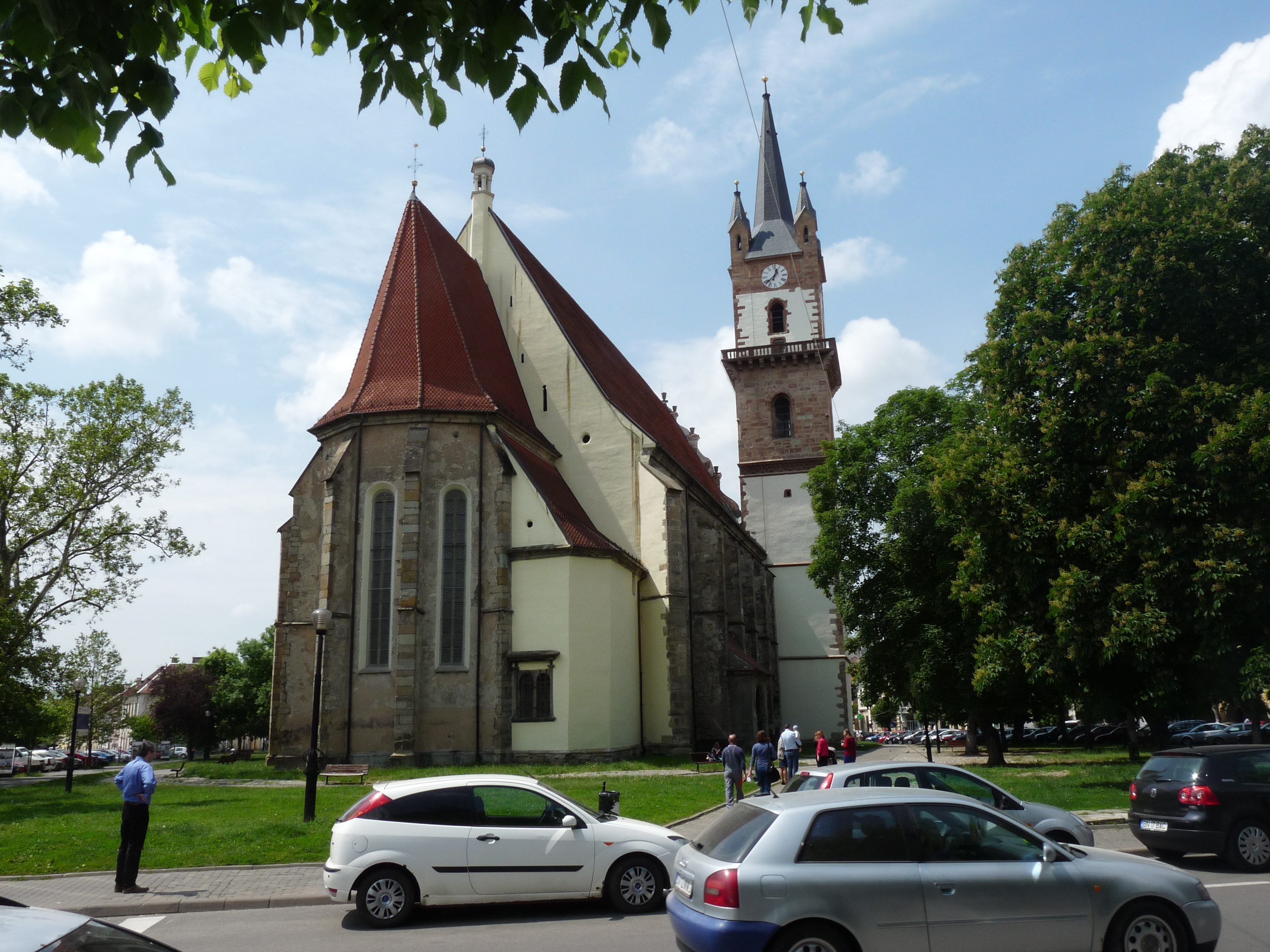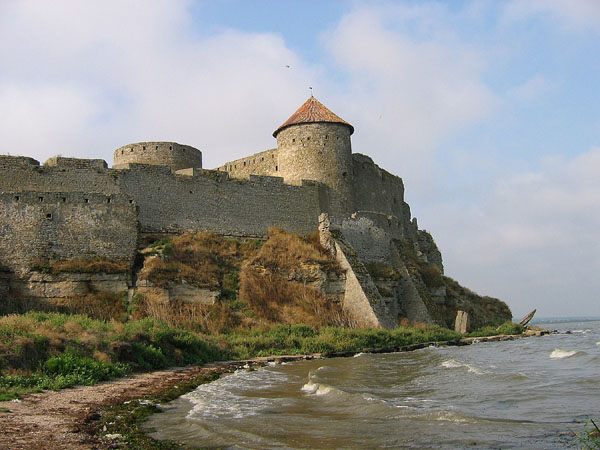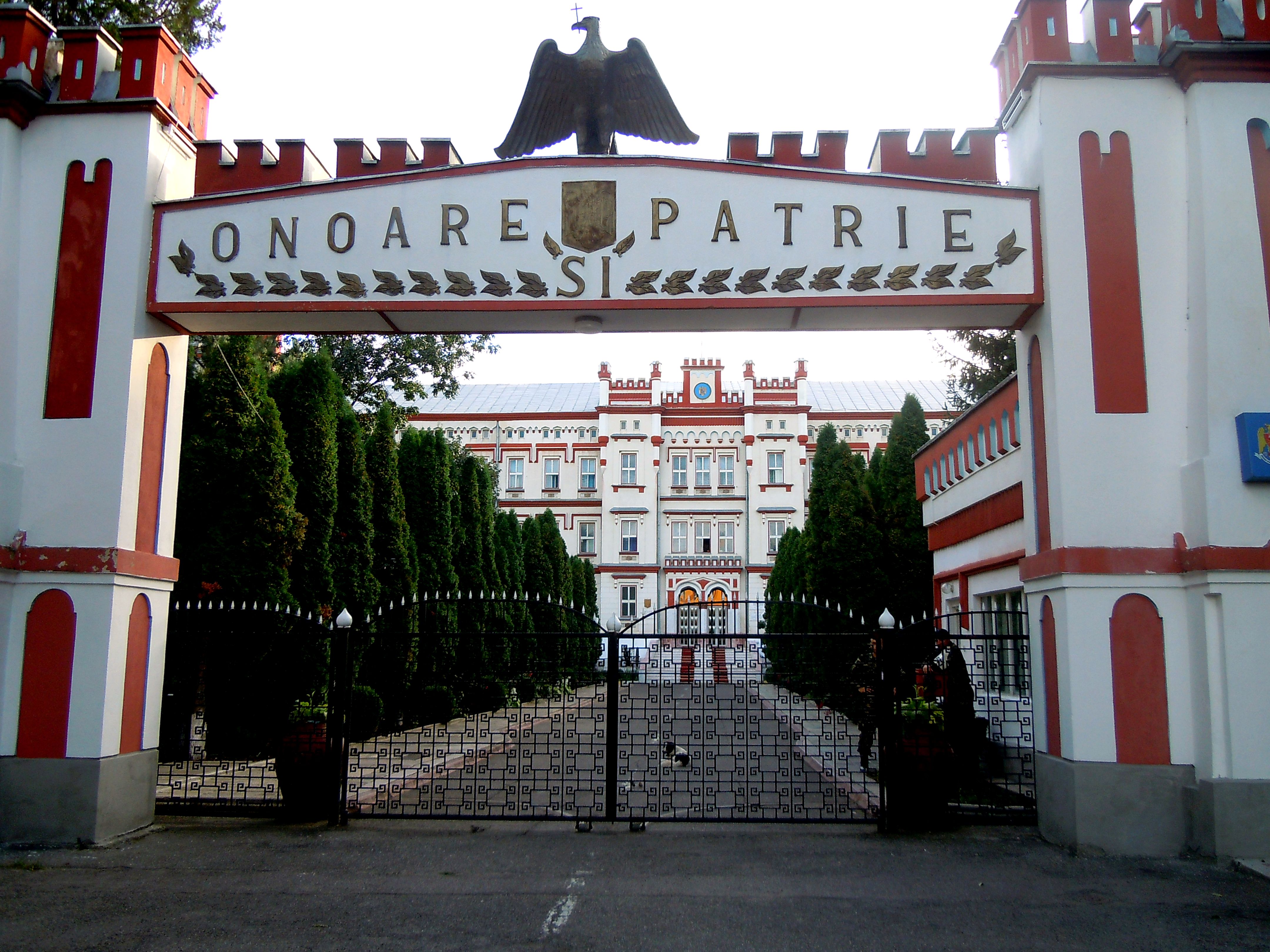|
4th Infantry Division (Romania)
The 4th Infantry Division ''Gemina'' is one of the major units of the Romanian Land Forces, with its headquarters in Cluj-Napoca. Until 15 June 2008 it was designated as the 4th Territorial Army Corps " Mareșal Constantin Prezan" (''Corpul 4 Armată Territorial "Mareșal Constantin Prezan"''). Structure 2020 * 4th Infantry Division "Gemina", in Cluj-Napoca ** 15th Mechanized Brigade " Podu Înalt", in Iași ** 18th Infantry Brigade "Banat", in Timișoara ** 61st Mountain Hunters Brigade "Virgil Bădulescu", in Miercurea Ciuc ** 81st Mechanized Brigade "General Grigore Bălan", in Bistrița ** 50th Anti-aircraft Missile Regiment " Andrei Mureșianu", in Florești ** 69th Mixed Artillery Regiment "Silvania", in Șimleu Silvaniei ** 317th Intelligence, Surveillance and Reconnaissance (ISR) Regiment "Vlădeasa", in Cluj-Napoca References External linksWebsite dedicated to the Romanian Army in World War IIOfficial site of the 4th Division {{Romanian Land Forces 4th Ro ... [...More Info...] [...Related Items...] OR: [Wikipedia] [Google] [Baidu] |
Romania
Romania ( ; ro, România ) is a country located at the crossroads of Central Europe, Central, Eastern Europe, Eastern, and Southeast Europe, Southeastern Europe. It borders Bulgaria to the south, Ukraine to the north, Hungary to the west, Serbia to the southwest, Moldova to the east, and the Black Sea to the southeast. It has a predominantly Temperate climate, temperate-continental climate, and an area of , with a population of around 19 million. Romania is the List of European countries by area, twelfth-largest country in Europe and the List of European Union member states by population, sixth-most populous member state of the European Union. Its capital and largest city is Bucharest, followed by Iași, Cluj-Napoca, Timișoara, Constanța, Craiova, Brașov, and Galați. The Danube, Europe's second-longest river, rises in Germany's Black Forest and flows in a southeasterly direction for , before emptying into Romania's Danube Delta. The Carpathian Mountains, which cross Roma ... [...More Info...] [...Related Items...] OR: [Wikipedia] [Google] [Baidu] |
Mareșal (Romania)
Mareșal (Marshal) is the highest rank in the Army of Romania, the Romanian Armed Forces. It is the equivalent of a field marshal in other countries. The rank of ''mareșal'' can only be bestowed to a General or Admiral ( ro, amiral), in time of war for exceptional military merits, by the President of Romania and confirmed by the Supreme Council of National Defense. Only three non-royal persons were bestowed the rank ''mareșal'' to date: Alexandru Averescu, Constantin Prezan, and Ion Antonescu. The first two were Generals during World War I, and the last was General during World War II, and Ruler of Romania between the abdication of King Carol II (6 September 1940) and his arrest by King Michael I (23 August 1944). Of the Romanian kings, Ferdinand I, Carol II and Michael I were Marshals of Romania. King Carol I Carol I or Charles I of Romania (20 April 1839 – ), born Prince Karl of Hohenzollern-Sigmaringen, was the monarch of Romania from 1866 to his death in 1914, ... [...More Info...] [...Related Items...] OR: [Wikipedia] [Google] [Baidu] |
Bistrița
(; german: link=no, Bistritz, archaic , Transylvanian Saxon: , hu, Beszterce) is the capital city of Bistrița-Năsăud County, in northern Transylvania, Romania. It is situated on the Bistrița River. The city has a population of approximately 70,000 inhabitants and administers six villages: (; ), (; ), (; ), (; ), (until 1950 ; ; ) and (; ). Etymology The town was named after the River, whose name comes from the Slavic word meaning 'fast-moving water'. History The earliest sign of settlement in the area of is in Neolithic remains. The Turkic Pechenegs settled the area in 12th century following attacks of the Cumans. Transylvanian Saxons settled the area in 1206 and called the region . A large part of settlers were fugitives, convicts, and poor people looking for lands and opportunities. The destruction of ("Market Nösen") under the Mongols of central Europe is described in a document from 1241. The city was then called . Situated on several trade routes, bec ... [...More Info...] [...Related Items...] OR: [Wikipedia] [Google] [Baidu] |
Grigore Bălan
Grigore Bălan (July 14, 1896–September 13, 1944) was a Romanian brigadier general during World War II. Bălan was born in Felsőbalázsfalva, a village in Beszterce-Naszód County, Kingdom of Hungary, now Blăjenii de Sus, Bistrița-Năsăud County, Romania. He attended the Infantry School for Officers in Bucharest, graduating as second lieutenant in 1915. He fought in World War I, advancing to the rank of lieutenant by 1918. During the interwar period, he was promoted to captain (1921), major (1929), lieutenant-colonel (1936), and colonel (1940). He served as commanding officer of the 5th Mountain Group from September 1940 to February 1943. In February 1942 he was awarded the Order of Michael the Brave, 3rd Class, for bravery during the battle of Mala Bilozerka (September 25–October 2, 1941).Decretul Regal nr. 445 din 12 februarie 1942 pentru conferiri de decorații, publicat în ''Monitorul Oficial'', anul CX, nr. 45 din 21 februarie 1942, partea I-a, p. 1.186. In Ju ... [...More Info...] [...Related Items...] OR: [Wikipedia] [Google] [Baidu] |
81st Mechanized Brigade (Romania)
The 81st Mechanised Brigade (''Brigada 81 Mecanizată "General Grigore Bălan"'') is a mechanised brigade of the Romanian Land Forces, established on 1 March 1995. The unit's headquarters are in Bistrița, and it is subordinated to the 4th Infantry Division "Gemina", with headquarters in Cluj-Napoca. It is named after Grigore Bălan, a brigadier general in World War II, who was killed in action during the liberation of Transylvania in 1944. The unit was founded in Dej in September 1968, as a consequence of the decision of the Romanian leadership following the Warsaw Pact invasion of Czechoslovakia in August 1968. The 81st Mechanized Division became operational in September 1969. Between 1995 and 2000, the headquarters of the 81st Mechanised Brigade were located in Dej, and since December 2000 in Bistrița. The brigade became completely operational in April 2002. Organization 1989 Initially equipped with a limited number of T-34-85 tanks and transport trucks, the division wo ... [...More Info...] [...Related Items...] OR: [Wikipedia] [Google] [Baidu] |
Miercurea Ciuc
Miercurea Ciuc (; hu, Csíkszereda, ; german: Szeklerburg) is the county seat of Harghita County, Romania. It lies in the Székely Land, a mainly Hungarian-speaking ethno-cultural region in eastern Transylvania, and is situated in the Olt River valley. The city administers three villages: * Ciba / Csiba * Harghita-Băi / Hargita-fürdő * Jigodin-Băi / Zsögöd-fürdő, including Jigodin / Csíkzsögöd Demographics According to the census of 2011, there were 37,980 people living in the city. Of this population, 81.39% are ethnic Hungarians, while 17.4% are ethnic Romanians, 0.9% are ethnic Romani, and 0.33% declare other nationalities. According to the census of 2002, there were 42,029 people living in the city. Of this population, 81.75% are ethnic Hungarians, while 17.3% are ethnic Romanians, 0.62% are ethnic Romani and 0.33% declare other nationalities. ''Demographic movements according to census data:'' Colors= id:lightgrey value:gray(0.9) id:darkgrey value: ... [...More Info...] [...Related Items...] OR: [Wikipedia] [Google] [Baidu] |
61st Mountain Troops Brigade (Romania)
The 61st Mountain Troops Brigade "General Virgil Bădulescu" (''Brigada 61 Vânători de Munte'') is a mountain troops brigade of the Romanian Land Forces. It was formed in October 1991. The brigade is currently subordinated to the 4th Infantry Division and its headquarters are located in Miercurea Ciuc. Organization 2020 * 61st Mountain Hunters Brigade "Virgil Bădulescu", in Miercurea Ciuc ** 17th Mountain Hunters Battalion " Dragoș Vodă", in Vatra Dornei ** 22nd Mountain Hunters Battalion " Cireșoaia", in Sfântu Gheorghe ** 24th Mountain Hunters Battalion "General Gheorghe Avramescu", in Miercurea Ciuc 29 November 2005 ** 385th Artillery Battalion " Iancu de Hunedoara< ... [...More Info...] [...Related Items...] OR: [Wikipedia] [Google] [Baidu] |
Timișoara
), City of Roses ( ro, Orașul florilor), City of Parks ( ro, Orașul parcurilor) , image_map = Timisoara jud Timis.svg , map_caption = Location in Timiș County , pushpin_map = Romania#Europe , pushpin_relief = 1 , pushpin_label_position = bottom , coordinates = , subdivision_type = Country , subdivision_name = , subdivision_type1 = Counties of Romania, County , subdivision_name1 = Timiș County, Timiș , subdivision_type2 = Subdivisions of Romania, Status , subdivision_name2 = County seat , established_title = First official record , established_date = 1212 (as ''castrum regium Themes'') , leader_party = Save Romania Union, USR , leader_title = Mayor , leader_name = Dominic Fritz , leader_title1 = Deputy mayors , leader_name1 = Ruben Lațcău (Save Romania Union, USR)Cosmin Tab� ... [...More Info...] [...Related Items...] OR: [Wikipedia] [Google] [Baidu] |
Banat
Banat (, ; hu, Bánság; sr, Банат, Banat) is a geographical and historical region that straddles Central and Eastern Europe and which is currently divided among three countries: the eastern part lies in western Romania (the counties of Timiș, Caraș-Severin, Arad south of the Mureș river, and the western part of Mehedinți); the western part of Banat is in northeastern Serbia (mostly included in Vojvodina, except for a small part included in the Belgrade Region); and a small northern part lies within southeastern Hungary (Csongrád-Csanád County). The region's historical ethnic diversity was severely affected by the events of World War II. Today, Banat is mostly populated by ethnic Romanians, Serbs and Hungarians, but small populations of other ethnic groups also live in the region. Nearly all are citizens of either Serbia, Romania or Hungary. Name During the Middle Ages, the term "banate" designated a frontier province led by a military governor who was called ... [...More Info...] [...Related Items...] OR: [Wikipedia] [Google] [Baidu] |
Iași
Iași ( , , ; also known by other alternative names), also referred to mostly historically as Jassy ( , ), is the second largest city in Romania and the seat of Iași County. Located in the historical region of Moldavia, it has traditionally been one of the leading centres of Romanian social, cultural, academic and artistic life. The city was the capital of the Principality of Moldavia from 1564 to 1859, then of the United Principalities from 1859 to 1862, and the capital of Romania from 1916 to 1918. Known as the Cultural Capital of Romania, Iași is a symbol of Romanian history. Historian Nicolae Iorga stated that "there should be no Romanian who does not know of it". Still referred to as "The Moldavian Capital", Iași is the main economic and business centre of Romania's Moldavian region. In December 2018, Iași was officially declared the Historical Capital of Romania. At the 2011 census, the city-proper had a population of 290,422 (making it the fourth most populous in ... [...More Info...] [...Related Items...] OR: [Wikipedia] [Google] [Baidu] |
Battle Of Vaslui
The Battle of Vaslui (also referred to as the Battle of Podul Înalt or the Battle of Racova) was fought on 10 January 1475, between Stephen III of Moldavia and the Ottoman governor of Rumelia, Hadım Suleiman Pasha. The battle took place at Podul Înalt (''the High Bridge''), near the town of Vaslui, in Moldavia (now part of eastern Romania). The Ottoman troops numbered up to 120,000, facing about 40,000 Moldavian troops, plus smaller numbers of allied and mercenary troops. Stephen inflicted a decisive defeat on the Ottomans, with casualties according to Venetian and Polish records reaching beyond 40,000 on the Ottoman side. Mara Branković (Mara Hatun), the former younger wife of Murad II, told a Venetian envoy that the invasion had been the worst ever defeat for the Ottomans.''Istoria lui Ştefan cel Mare'', p. 133 Stephen was later awarded the title "Athleta Christi" (''Champion of Christ'') by Pope Sixtus IV, who referred to him as ("the true defender of the Christian f ... [...More Info...] [...Related Items...] OR: [Wikipedia] [Google] [Baidu] |
15th Mechanized Brigade (Romania)
The 15th Mechanized Brigade ( ro, Brigada 15 Mecanizată "Podul Înalt") is a mechanized brigade of the Romanian Land Forces. It was formed in 1 July 1994 from the ex 15th Mechanized Regiment, and named after the "Battle of Vaslui, Battle of Podul Înalt". The brigade is currently subordinated to the 4th Infantry Division (Romania), 4th Infantry Division, and its headquarters are located in Iași. History Origins to World War I The 15th Mechanized Brigade is the successor of the established on 1 January 1877. It was headquartered at Piatra Neamț and had two battalions with four companies each. During the Romanian War of Independence, War of Independence, the regiment participated in the battles of Battle of Plevna, Plevna, Rahova, and . On 15 July 1891, it received the name "Războieni" after the Battle of Războieni. The 15th Războieni Regiment participated in the Second Balkan War, then in World War I. During the war, it the regiment acted in the Eastern Carpathians, at Miec ... [...More Info...] [...Related Items...] OR: [Wikipedia] [Google] [Baidu] |






